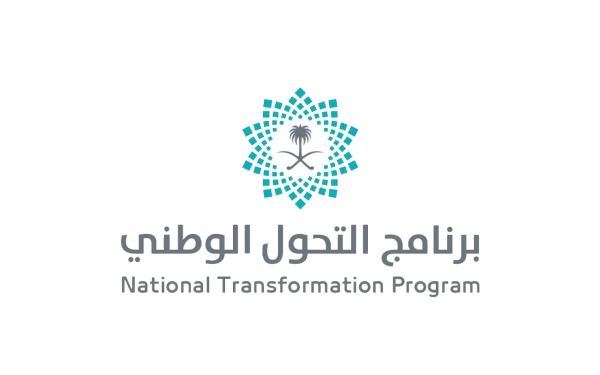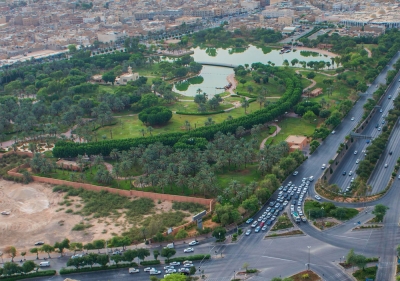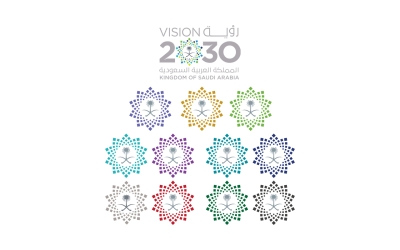

The National Transformation Program is one of the programs of Saudi Vision 2030. It was launched in 2016 to develop the required infrastructure for the private and public sectors, as well as the non-profit sector. This is achieved through a focus on excellence in government performance, supporting digital transformation, and developing economic associations to improve economic empowerment factors and enhance the citizens' standard of living.
The National Transformation Program established thirty-seven goals in its first phase (2016-2020) and achieved several objectives, including developing the tourism and national heritage sector, improving livelihood standards and safety, and enhancing healthcare services. In the second phase of the program (2021-2025), the dimensions of the strategic objectives, their indicators, and their initiatives were transferred to continue working on them in executive programs with greater specialization to achieve optimal efficiency.
The second phase of the National Transformation Program aims to achieve thirty-four objectives, including: developing e-government, enhancing the quality of services provided to citizens, promoting transparency in all government sectors, improving the productivity of government employees, facilitating business practices, attracting foreign and domestic investments, developing the digital economy, and advancing the retail sector.
The program's objectives also include: increasing the contribution of small and medium enterprises to the economy, reducing pollution in its various forms, increasing women's participation in the labor market, supporting national companies to enhance their global leadership, achieving developmental and food security, enabling the integration of people with disabilities into the job market, ensuring sustainable use of water resources, protecting and preparing natural areas, enabling non-profit organizations to have a deeper impact, advancing cooperation among Gulf Cooperation Council countries, developing regional economic relations, and enhancing economic ties with global partners.
Targets of the National Transformation Program
By the end of 2025, the program aims at several aspects, among the most prominent are: increasing the rehabilitated vegetative cover to 86,982 ha, raising the number of volunteers in the Kingdom to six hundred thousand volunteers, increasing the share of the digital economy in the Gross Domestic Product (GDP) to reach 19.20 percent, in addition to improving the maturity level of the digital transformation of key government services to 92 percent, and increasing the volume of foreign direct investment flows to SAR95.4 billion.
The most notable achievements of the National Transformation Program in its first phase
From its launch until the end of its first phase in 2020, the National Transformation Program achieved many accomplishments, including: the Kingdom's ranking as the eighth among the G20 countries in global competitiveness for 2020, the completion of over 555 reforms for investor services including legislative and regulatory reforms, improving the business environment and promoting women's participation, reducing the time to start a business to thirty minutes and obtaining a commercial register in 180 seconds, increasing the number of small and medium enterprises to reach 614,000 establishments, the Kingdom's achievement of the first place in download speeds for 5G services, and the eighth place among the G20 countries in the telecommunications infrastructure index, and covering 576,000 homes with wireless broadband services in remote areas.
The first phase of the program also included accomplishments such as: increasing the percentage of emergency medical care for patients from their entry into the emergency gate until their exit within four hours from 36 percent in 2016 to 87 percent in 2020, a decrease in the index of major traffic accidents by 36 percent in 2020 compared to 2016, in addition to launching the tourist visa and issuing 440,000 visas, increasing the number of sites registered on the United Nations Educational, Scientific and Cultural Organization (UNESCO) list to five heritage sites, a 94 percent increase in the economic participation rate of Saudi females compared to 2017, enhancing the attractiveness of the labor market, and improving the quality of judicial services.
Dimensions of the National Transformation Program in its second phase
The National Transformation Program moved in 2021 to the next phase in fulfilling Saudi Vision 2030. The Program updated its plan and introduced new initiatives to accommodate the strategic goals added to the program, working within seven dimensions that combine thirty-four strategic goals. The dimensions of the program include: achieving excellence in government performance, ensuring the sustainability of vital resources, enhancing community development and developing the non-profit sector, empowering segments of the society to enter and enhance the attractiveness of the labor market, digital transformation, contributing to the empowerment of the private sector, and developing economic partnerships.
The most prominent indicators of the National Transformation Program in 2021
The indicators of the National Transformation Program measure the program's progress in achieving its objectives and performance, including:
- The percentage of electronic services for the Ministry of Justice, where the actual value reached 85.45 percent, exceeding the targeted 81.16 percent for the year 2021.
- The Kingdom's ranking in the Corruption Perceptions Index, reached fifty-second, with a target of being in the fiftieth place.
- The percentage of environmentally licensed industrial establishments reached 59.1 percent.
- The area of the rehabilitated natural vegetation cover reached 60,065 ha, compared to a target of 47,500 ha.
- The number of volunteers in the Kingdom, reached 484,251, surpassing the target of 360,000 volunteers.
- The percentage of women in managerial positions, which reached 39 percent, exceeding the target of 29.4 percent.
- The satisfaction rate of the business community with government communication channels, reached 94 percent, exceeding the target of 90.4 percent.
- The volume of direct foreign investment inflows, reached SAR65 billion surpassing the target of SAR42 billion.
Related quizzes

